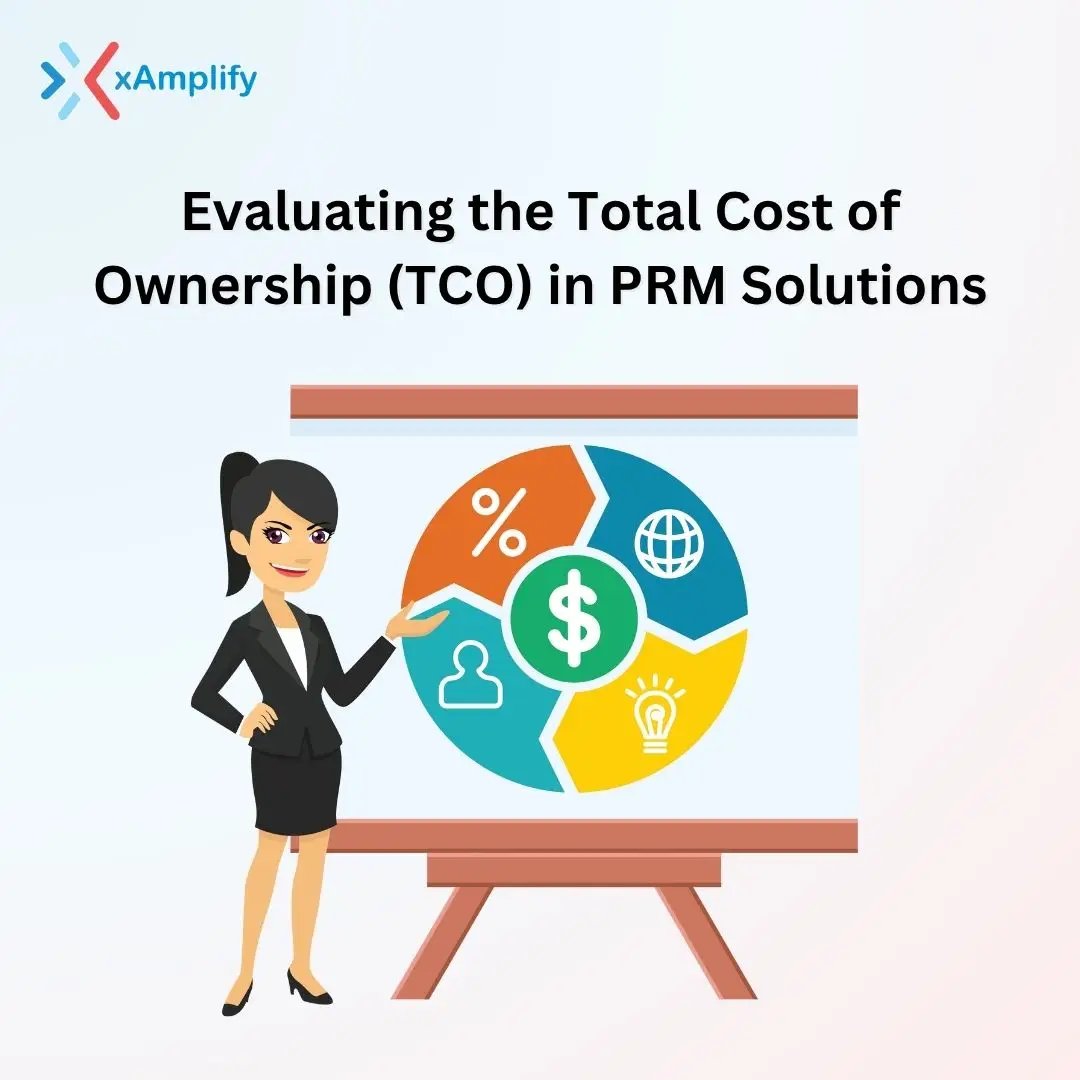PRM software has now become an indispensable tool for any business that wants to unleash the true power of its partner network. This is because PRM manages partner onboarding, communication, and collaboration in a centralized and organized manner and allows performance tracking. Yet, with PRM solutions such as xAmplify, it has become even more necessary to weigh the options with their TCO so that informed investment decisions can be made.
TCO refers to the total costs associated with implementing and operating the PRM solution over its life. The costs are not just confined to the simple purchase price, but involve a number of direct and indirect costs that an organization may incur. With appropriate TCO analysis, companies can determine exactly what the financial implications of PRM adoption will be and can make strategic decisions based on budgetary and business considerations.
Direct Costs
Software Licensing: This is perhaps the most obvious direct cost, the license fee for the software itself, usually based on the number of users, partners, or list size that will use the PRM solution. This means considering various pricing models and subscription plans provided by different PRM vendors like xAmplify in order to know which one may be more budget-friendly with respect to your organization size and requirement.
Implementation: This is the actual implementation cost of PRM, including all the costs associated with setting up, configuring, and customizing the software. Such costs can vary radically depending on how complex your partner network is, what integrations you will have, and how customized you want your software to be.
Training and Support: Your team and partners should be able to use the PRM solution effectively. Budget for training programs, documentation, and ongoing technical support to resolve any issues or questions arising during the implementation and usage phases.
Indirect Costs
1. Integration: This means integrating the PRM software with the existing systems at your company, such as CRM and ERP systems. The cost of integration may be an added burden, but an integrated system helps in smooth data flow and increases efficiency.
2. Maintenance and Updates: Programs usually require maintenance, updating, and sometimes troubleshooting after periods of use. Consider the cost of keeping your PRM solution updated and secure. xAmplify and other PRM vendors release periodic updates; these normally include new features and enhancements.
3. Infrastructure: In case your organization chooses an on-premise PRM solution, there are a lot of extra costs regarding infrastructure. For instance, it includes server hardware, network resources, and data center facilities. Cloud-based PRM solutions, such as xAmplify, reduce these infrastructure costs.
4. Customization: Your PRM solution might have to be customized further down the line when your partner network expands or evolves. Consider the likely customization costs that come with changing the shape of the software to ever-changing partner requirements.
5. Security: Security of the data, especially if it involves those of partners or customers is of utmost importance. The spending that goes to safeguard the protection measures for the same, compliance, and cybersecurity tools should be accounted for in the TCO analysis.
The ROI Factor
While calculating TCO, it is equally important to consider the ROI that will be associated with your PRM solution. The metric of ROI depicts the financial return gained by the PRM software against overall costs incurred. Elements affecting ROI may include increased partner-sourced revenue, improved partner relationships, decreased administrative workload, and increased operational efficiency.
An organization should consider TCO against expected ROI and determine whether investing in a PRM solution is worth the financial decision. For instance, functionality on xAmplify simplifies working with partners, automates many tasks, and gives actionable insights into partner performance. While determining the effectiveness of your ROI, take into consideration how those functionalities add up in revenue growth, cost efficiencies, and/or productivity enhancement in your partner network.
How to Choose the Right PRM Solution
Some variables to use in making a fully informed decision when assessing the TCO for PRM solutions such as xAmplify include the following:
1. Scalability: Does a PRM solution scale as your partner network grows without a great increase in TCO? With xAmplify’s scalability, you can be sure that you will be able to take on board more partners without added costs bouting proportionately.
2. Usability: An intuitive PRM solution saves in training and support. Assess how intuitive the software is and can be in user onboarding and use processes.
3. Vendor Reputation: Consider the reputation and track record the vendor has. Read customer reviews and seek references that allow you to estimate the reliability and effectiveness of the solution.
4. Feature Set: Observe what features are available in the PRM solution. Make sure it helps in achieving your goal in partner management, which is performing partner collaboration, performance tracking, and data analytics.
5. Integration Capabilities: You should know how well the PRM solution integrates with your existing systems and tools. Smooth integration will save costs and increase efficiency.
Precisely, the TCO of a PRM solution prescribes the very investment that actually needed to be done. The evaluation of the TCO for the PRM solution is important to make an appropriate investment decision with regard to both direct and indirect costs for taking up PRM adoption like xAmplify.
However, TCO alone should not be considered; it needs to be weighed against expected ROI and the strategic benefit coming from using the PRM solution in your partner management activities. When considered with all related aspects included, TCO analysis will lead you to select the right PRM solution-that fits your business goals and budget while reaping maximum benefits in managing effective partner relationships.

